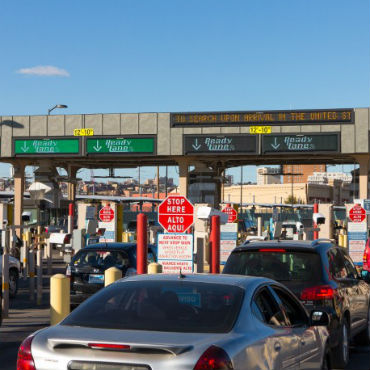IG: Silos contributing to DHS immigration woes

An audit found that DHS is struggling to implement a unified immigration strategy and pointed to a series of breakdowns that illustrate a lack of communication and coordination between different offices.

A Nov. 1 audit by the Department of Homeland Security Office of Inspector General found that ongoing struggles with internal management silos are preventing the department from implementing a unified immigration strategy.
The report claims that 15 years after its formation, DHS still lacks the kind of organizational structure, discipline and coordination to effectively carry out its immigration enforcement mandate.
Auditors believe one of the major contributing factors is the lack of a centralized leadership group or office that is dedicated to immigration enforcement priorities and has visibility into the various offices and can carry out the department's collective policy. While it does have an office of immigration policy, auditors found the office "still lacks the capability to provide immigration guidance to the Department because of limited support and authority."
In 2014, DHS Secretary Jeh Johnson issued a unity of effort memo designed to help break down interdepartmental silos through efforts like bi-monthly meetings among leadership, a management action group for deputies to better coordinate budget decisions and other centralized planning efforts. While auditors believe the memo has helped in part, they found that department and component offices with immigration responsibilities "do not always coordinate efforts to address strategic immigration activities."
Eli Hammerman, vice president for CSRA's Homeland Security Group, has supported DHS as a contractor since 2004. Hammerman said DHS is still "an adolescent agency" and that many of the communication silos mentioned in the report trace their origin back to the department's creation in a 24-month timeframe in the early 2000s, when 22 new and existing agencies were folded into DHS.
For example, much of the department's mission around immigration is carried out by Immigration and Customs Enforcement, Customs and Border Protection and the U.S. Citizenship and Immigration Service. Yet Hammerman said there really hasn't been a unified communications structure for those individual agencies to coordinate with each other since former DHS Secretary Michael Chertoff did away with the undersecretary of border and transportation security." He said that kind of communication now can be done only through the DHS secretary, who has a massive portfolio of responsibility outside of immigration.
Among other problems, one of the issues flagged by the OIG was the inconsistent manner in which DHS collects and processes data around immigration program expenditures. The department uses a decision-making process called Planning, Programming, Budgeting and Execution to coordinate its money and resource allocation for different mission priorities, including immigration.
However, when auditors attempted to compare dollars budgeted for immigration activities and actual expenditures, they weren't able to do so because the office of policy and office of budget "do not track the two data groups similarly," wrote auditors. Dollars were allocated by mission on the front end, but the department only tracks actual spending decisions by program project activity.
This meant that auditors, and by implication DHS, lack an apples-to-apples comparison of budget and spending data.
"Without an evaluation between allocations and expenditures, DHS cannot identify budget disparities and inconsistencies between its components, appropriations, and programs to ensure taxpayer funds effectively accomplish the immigration enforcement and administration mission," the auditors wrote.
OIG recommended that DHS create a department-level position responsible for enforcing immigration laws while cutting across different agencies to improve communication, coordination and foster more consistent data collection and reporting.
In a response signed by Assistant Secretary for International Affairs James D. Nealon, DHS concurred with the findings and shared plans to create an immigration policy council composed of immigration enforcement stakeholders that would fulfill many of those functions by March 2018.
"The Department is committed to joint planning, better coordination, and increased information sharing among CPB, ICE and USCIS, which would further support the Department's strategic goals and mission," wrote Nealon.
Correction: This article was updated on Nov. 8 to correct the name of Customs and Border Protection and to correct the title of the former official in charge of border and transportation security.


